Dean’s been in touch with an interesting post on N scale weights.
Changing couplers, wheels and weighing your rolling stock may seem like a bit of faff, but I suspect it’s the difference between a smooth running layout and a derailing one.
Please do leave a comment on this one, would love to know what you all think:
“Cheer’s Al, from Dean in New Mexico.
As anyone who follows the progress on my layouts may have guessed, I tend to be cheap, buying low priced cars, then fixing them up.
All my freight cars were bought in two parts: a Bachmann train set (the Bachmann “Golden Spike” set with two engines, four cars, track and a DCC controller—no longer available) and two sets of multiple freight cars from overstocked dealers.
I’m not a prototypical modeler and the only visitors to my trains are grandchildren who don’t care how they look, just how fast they run.
But with the low-priced freight cars, I’ve had lots of trouble keeping the rolling stock on the tracks. It was more a question of seeing which set of cars could make up a train that could make it around the layout without derailing.
I decided to do something about it and to tune up my freight cars.
The first thing was to use a consistent set of couples and wheel sets.
Here is a photo of some of the couplers and wheelsets that were on the cars. As you can see, they are all different and some don’t even couple consistently.
Although I prefer metal wheels, they tend to bump over turnouts, so I’ll stick to plastic wheels for now.
Here are the couplers and wheel sets, bought from China, that I’m standardizing on. They come in a box of a dozen sets which for around $15 can be purchased on eBay (search for “N Scale 1:160 Roller bearing Truck Coupler 33″ Plastic Wheels”). I’m with time converting all my stock to this wheel set.
Next, I correctly added weights to my cars. The NMRA (National Model Railroad Association) sets the standard weight of an N-scale car at 0.5 oz plus 0.15 oz for each inch of car length. Here is a table with the results for various car lengths from 2.5” to 5”
I bought a small digital scale (from Amazon) and started to weigh my cars.
A 50-ft boxcar weighed 0.56 oz; it should have been 1.06 oz. This is typical of all my cars, way underweight. I’m mostly using ¼-20 nuts as weights. This car took five nuts to increase its weight to the correct value. The nuts are attached with a few drops of super glue.
When done, the car was actually right on.
I don’t recommend buying tin-lead solder now, as it’s much more expensive than in the older days, but, if you have a roll of solder in your toolbox, you can melt a blob of it until you get the correct weight.
The same number of ¼-20 nuts was needed for a 40-ft boxcar, coming in close to the recommended value.
My set of open gondolas each took four ¼-20 nuts. I attached them with super glue to pieces of cardstock so that I could remove them if needed.
The long tanker is a problem. It’s grossly under weight (0.4 oz rather than 0.99 oz). Any place I put it on a train other than the rear car would lead to derailment.
Other modelers have suggested that you can snap the bottom of the tank apart from the top to add weight, but I haven’t been able to do that.
I’m trying to come up with some kind of liquid that I could squirt into the car then allow it to set up—maybe liquid epoxy. Any ideas from readers would be appreciated.
The caboose needs one more nut to make the correct weight.
For more information on my techniques and for some shots of running trains with the tuned-up cars, see
Thanks, Al, for all you do and thanks to my viewers! I appreciate all the support.
Dean”
A big thanks to Dean for sharing his N scale weights and wheels info.
Please do leave a comment if you can help Dean with his adding weight with a liquid.
Hope you enjoyed Bill’s pics and vid – he really is the gift that keeps giving.
That’s all today folks.
And if you’d like to feel the warm glow of supporting the blog, the Beginner’s Guide is here.
Best
Al
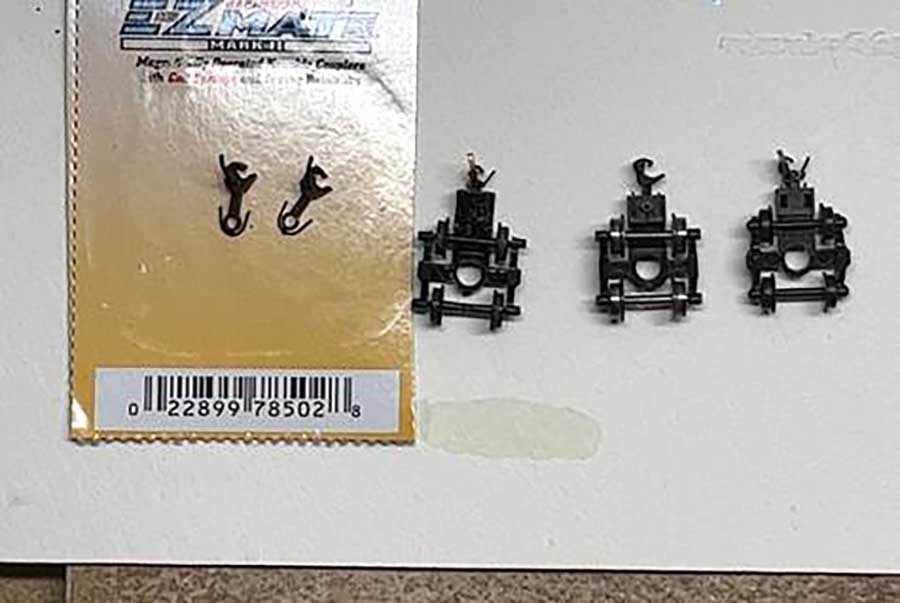
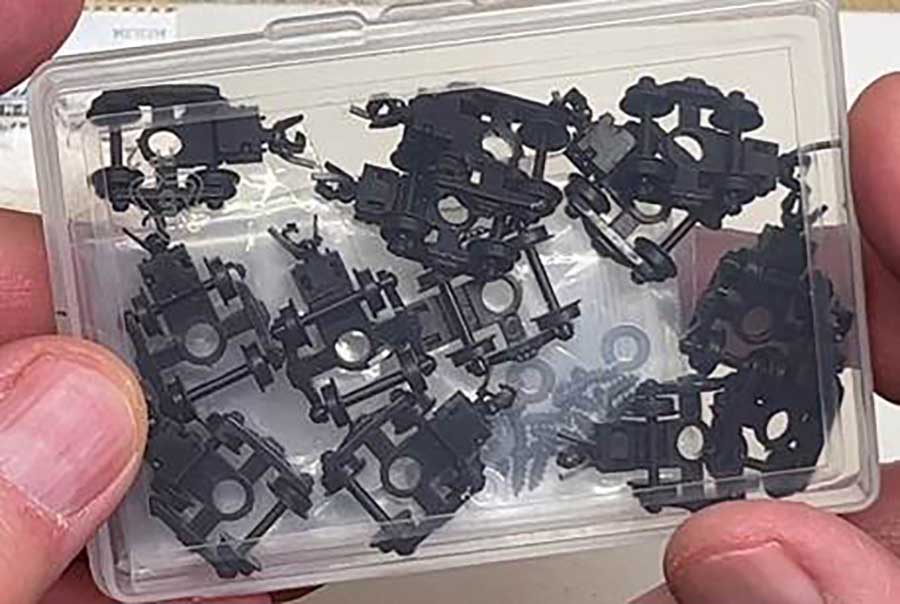
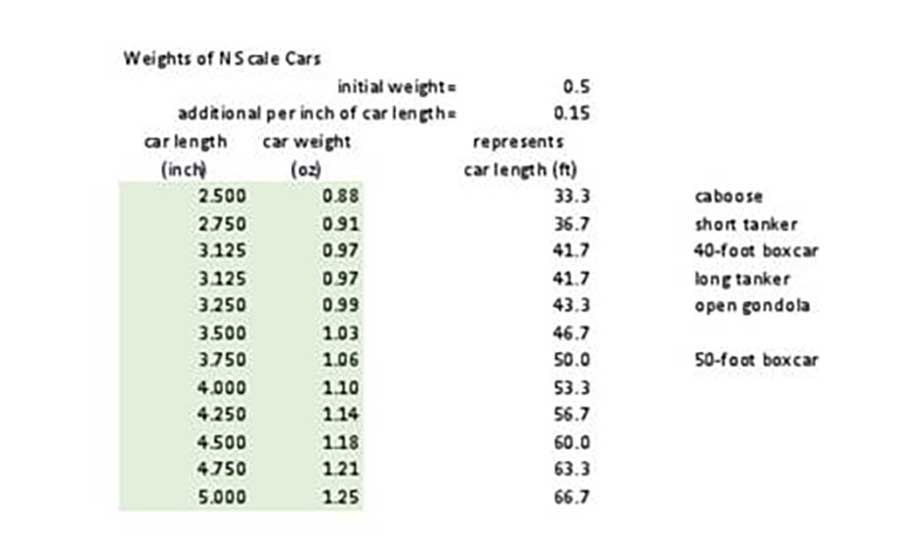
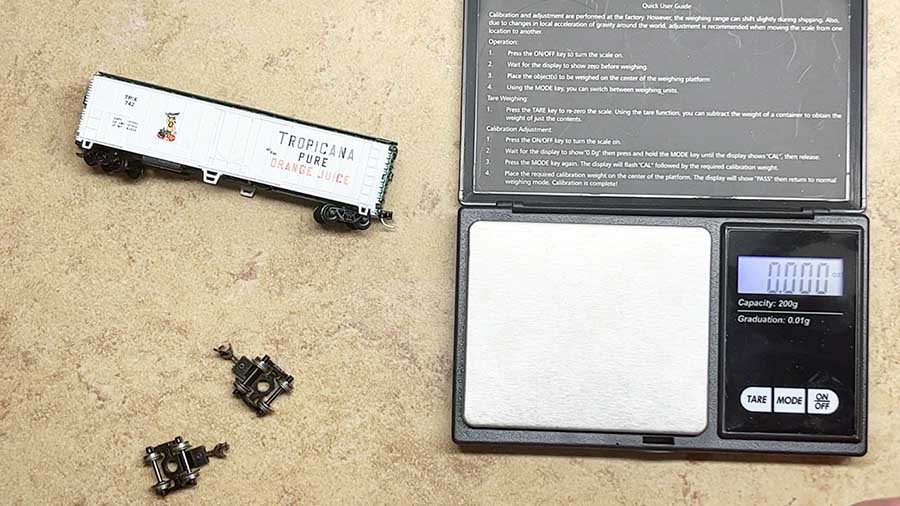

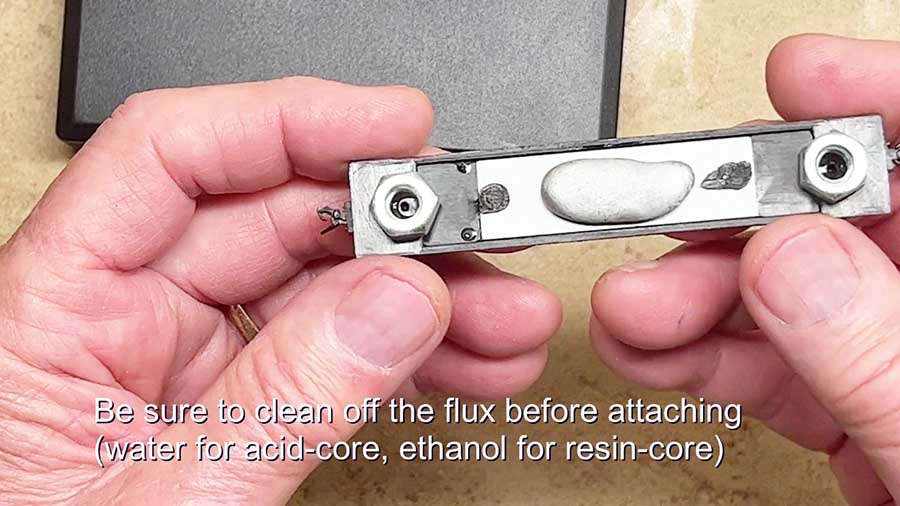

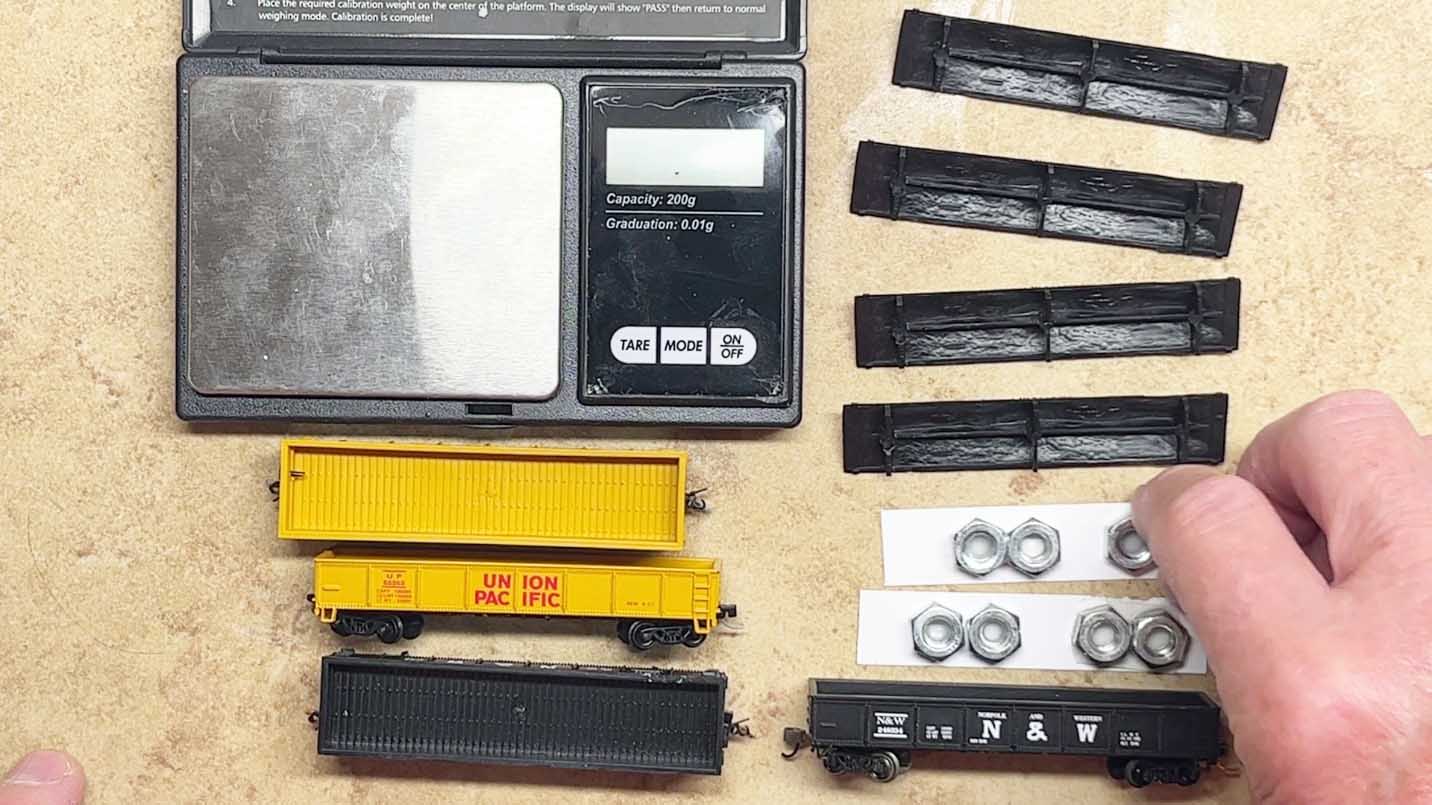
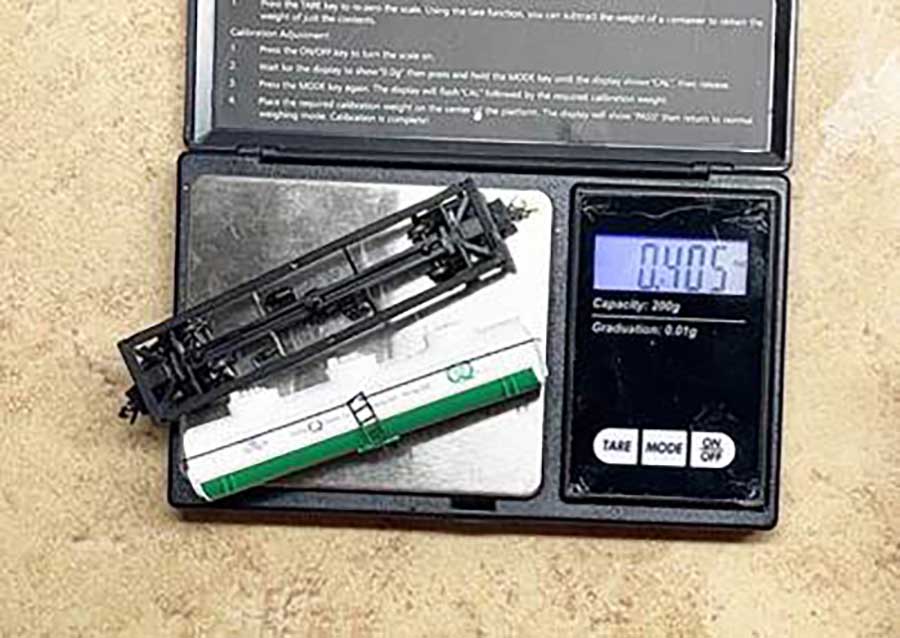
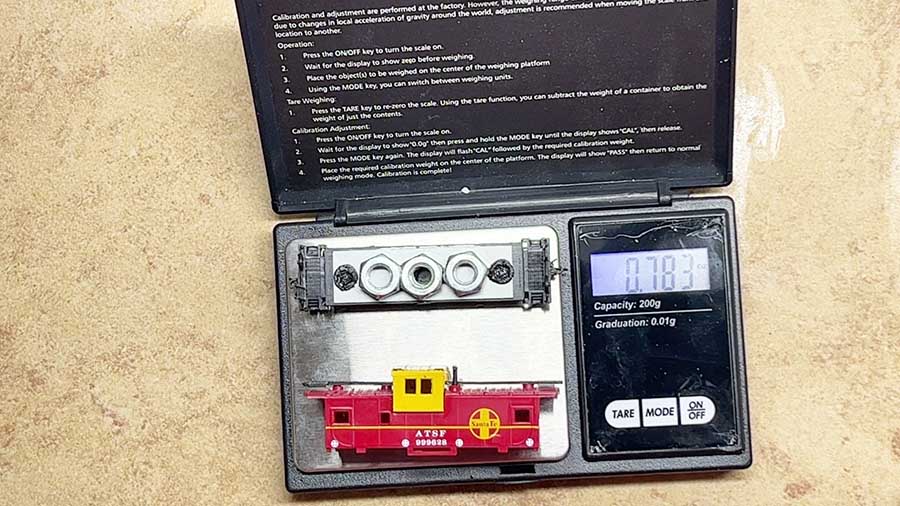

Dean, I model in ho scale. I had issues with some of my freight cars. Most of them I have been to tune up with wheels, weights and couplers. A couple of my tank cars I could not take apart to add weight. So after thinking on it I came up with an idea. I drilled a hole in the car at each end on the underside of the tank and filled the car with sand while checking the weight, once I had the correct weight., I covered the holes with masking tape and reassembled the car and it runs better than before. Give it a try….it really works !!!
Adding a bit of weight is an old trick but meaningless if your wheels or track/turnouts etc are out of gauge. Even 100 ton 1/1 jumps tracks if things are wonkers. Nothing to say on couplers
On the track gauge idea. I learned that early on with plastic ties and tacking track down. Don’t push the tacks in so tight it pinches the rails closer together, especially so with flex track and soldered connectors. Just a tip of my own here..
adding weight to N scale cars is relatively easy and safe. Instead of using lead or “hardware” (yuck) use one of the heaviest metals: TUNGSTEN. It inert, so it’s safe to work with, and it’s available in a number of different forms so finding one that works for any particular need is easy. You can find it on Amazon in self adhesive tape, fixed weight disks from 1/16 oz to 1 oz in size, in a putty form, as shot of various diameters, and even as powder. No, it’s not inexpensive as the minimum it comes in is a fair amount of each for, but get together with a buddy or two and split an order, a small amount goes a long ways. You can weight your tank car using different forms depending on how hidden and/or adjustable you want it. You could use the powder to fill the centerbeam as needed, fix in place with thick CA, and paint over it, or use the non hardening putty applied to the space between the tank and the chassis. It sticks well but is removable. or drill a couple 1/8 or 3/16″ holes into the bottom of the tank and pour in shot or powder, Plug the holes with tape or glue in a piece of sprue, give the tank a shake to distribute. It’s own weight will keep it in place if you handle the car with reasonable care. The shot or powder could be put in dummy crates to weight a box car without showing, or place strips of the tape over the floor of a boxcar or gondola and paint it wood brown. Tungsten is just what us N scalers have needed and the answer to our prayers.!
Very nice tutorial Dean! I hadn’t thought of using standard nuts for adding car weight, but your system seems to work great. I use PineCar peel & stick weights from Woodland Scenics to add weight to my HO scale train cars. They come in 2 ounce packs but break into rectangles that can be as small as 1/14th ounce.
As for your tank car dilemma, I would suggest using metal BBs that will fit through the holes in the bottom of the tank. Then squirt some glue through the hole and seal it with some tape. Then turn the tank upright and jiggle it a bit to get the BBs settled evenly in the bottom of the tank where you want the center of gravity to be. Let the glue dry, remove the tape, and reassemble the car.
I can’t really claim all the credit for the BB idea. I bought a wooden HOn3 box car on eBay that had BBs glued between the underbody braces to get the car up to NMRA weight. I agree that proper NMRA car weight along with good trucks and couplers contribute to smoother running trains.
I’ve had the same problem with derailing on “OO” gauge stock. I solved the problem by going to my local tyre fitting place and getting used weights. If I remember correctly “Dangerous Dave” bought his from a well-known auction site
I have the same problems in several places. I will try all these ideas out. Tracks and couplers are very good.
I use 1/4 oz car wheel balancing weights. They’re the perfect dimension for N scale. Used a couple of them inserted into a shipping container on the lead well car of a long rake which solved derailment problems quite nicely.
Nuts and bolts stuff, especially N Scale nuts and bolts makes me nutty. But good info here, especially if you don’t like your cars derailing!
BB;s and lead shot from old shotgun shells work fine. I have found that some of the cars would not track because the frames were twisted. Make sure that the trucks are on the same plane. I found a box of copper plated 10mm 1/2 oz.bullets at a show cheap.Adding one at each end of a Tyco trolley makes a world of difference.
I used a length of solder glued below the floor (where it doesn’t show). I’m amazed at how much weight you added! I should have weighed my cars and added more.
Jeff
Use candle wax for your tanker weight. Add BB’s if needed.
I think it’s interesting that there is a recommended weight for these cars, but yet manufacturers leave it up to their customers to get the correct weight. I’m relatively new to this hobby but I’ve seen my fair share of derailments and random uncoupling. Some couplers do not play well together while others are flawless. I’ve often thought about using “long shank” couplers too. I have a couple 60’ cars that occasionally do not make it through a tight radius turn. How do you know what your cars are supposed to weigh?
Harbor freight has 48 packs of 1/4 and 1/2 oz tire wheel weights in the auto department. They are self sticking and cost much less then hobby car weights.
Dean
I have a suggestion for your tank car try melted candle wax .
Ken Holbrook,
You can find the weights for your gauge cars by going to
nmra.org and then checking the standards section; then looking for your gauge. While you are there, buy the track gauge for your gauge; it’s a big help to make sure your tracks are the correct distance apart, etc.
To all the rest looking for free or cheap weights — find a garage that changes tires; they normally have a bucket of weights taken off of tires to be discarded and they may let you have as much lead weight as you can use.
Another source would be the shot pellets, in various sizes, that are used in shotgunshells; its no longer lead and you buy it by the box.
I normally read and post late at night, so I hope this info gets to folks who need it.
Very clever ideas for putting weight on cars. My question to you all:
Does the engine pull fewer cars because of the added weights. Like the engine pulled 10 cars b4 adding weights, will it only pull eight or nine cars now?? Seems there should be some effect on pulling power. Thanks for any thoughts or experience to share.
My experience is to add weight only to cars that need it rather than use standard weights for all. My preferred weights for HO are pennies that can be glued easily and are cheap and plentiful. Also, I have switched out all my plastic wheel sets to metal and upgraded all my hook couplers to magnetic knuckle types. No more derailing or uncoupling issues!